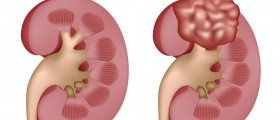
Small Cell Lung Carcinoma
All lung cancers can be classified into two groups, small cell carcinomas and non-small cell carcinomas. Small cell lung carcinoma is the most aggressive form of the disease which can easily spread to distant organs and once the diagnosis has been set the cancer is usually in advanced stages of the disease. It accounts for 20-25% of all lung cancers. This type of lung cancer is basically treated with radiation and chemotherapy and only if detected in the early stage it can be operated.
The difference between small cell carcinoma and non small cell is that small cell carcinoma grows rapidly, spreads quickly and responds better to chemotherapy and radiotherapy comparing to non small cell carcinoma. One more characteristic of this type of carcinoma is that it commonly leads to paraneoplastic syndrome.
Symptoms of Small Cell Lung Carcinoma
The problem of small cell carcinoma is that the symptoms usually occur late and the disease is, therefore, diagnosed in advanced stages of the disease. Patients may suffer from certain symptoms for a while, neglect them and this only makes the situation worse. Majority of symptoms are caused by local growth of the tumor. Initial symptoms may be additionally caused by metastatic spread of the tumor.
Nonspecific symptoms of small cell carcinoma include fatigue and unexplained weight loss.
The local growth of the tumor may lead to cough (cough is sometimes dry and patients may even cough up blood), shortness of breath and chest pain. Smokers may neglect cough and consider it as a consequence of smoking. They usually go to doctors when other symptoms develop.
The spread of the tumor leads to additional symptoms of the disease. Hoarse voice is a consequence of infiltration of the recurrent laryngeal nerve. Shortness of breath may not be only cause by local growth of the tumor. It can also result from diaphragmatic infiltration. Large tumors may compress the trachea and lead to stridor. In case of esophageal infiltration patients suffer from difficulty swallowing. Swelling of the face and neck accompanied by cyanosis is a consequence of superior vena cava syndrome.
Brain metastases cause headache, problems with vision, nausea, vomiting, and weakness of certain body parts. Paralysis may occur due to the spread of the tumor to the spinal cord.
If the tumor has spread to the bones, osteolysis of the affected bone is always accompanied by severe pain. In some cases even pathologic fractures may occur. And finally, infiltration of the liver results in pain in the right upper part of the liver or leads to functional liver abnormalities.

















Your thoughts on this
Loading...